Let me show you how to create a Table in Power BI with an example. A Power BI table contains the data arranged in the form of rows and columns. Each row contains detailed low-level information of each column. It may also include the header section and the row totals.
Generally, tables help compare multiple fields on a single page. For instance, one or more measures and columns are placed side by side. For this Power BI table report demonstration, we will use the SQL Data Source we made in our previous article.
When to use a Power BI Table
- To display the data in a tabular format.
- To view the data at the detailed level.
- To show all the available rows in the given columns.
- If you don’t need a visual representation of data.
- To show more number of numerical column data by categories.
How do you create a table in Power BI?
If you drag and drop any dimension field, the Power BI desktop automatically creates a table for you. Please refer to the Connect to SQL Server and the List of Charts article to understand the Power BI Data Source.
Selecting the Table icon under the Visualization section within the black page will generate a dummy table. Otherwise, selecting any text field in Power BI will automatically create a table. Next, add the required fields to the columns section.
Let me drag and drop the English Product Name from the Fields section to Canvas. As you can see from the screenshot below, the desktop automatically creates a table for you.
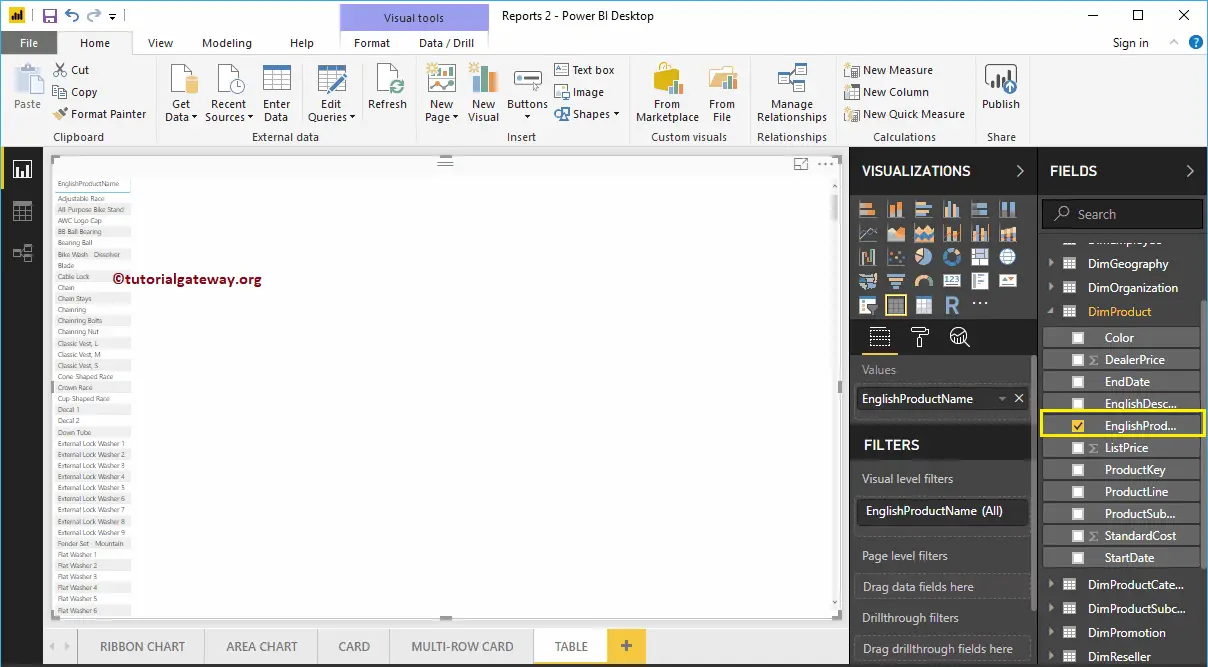
Create Power BI Table Method 2
You can follow this step to convert the existing chart to a table. We created a column chart, which represents the Sales Amount by Product Name.
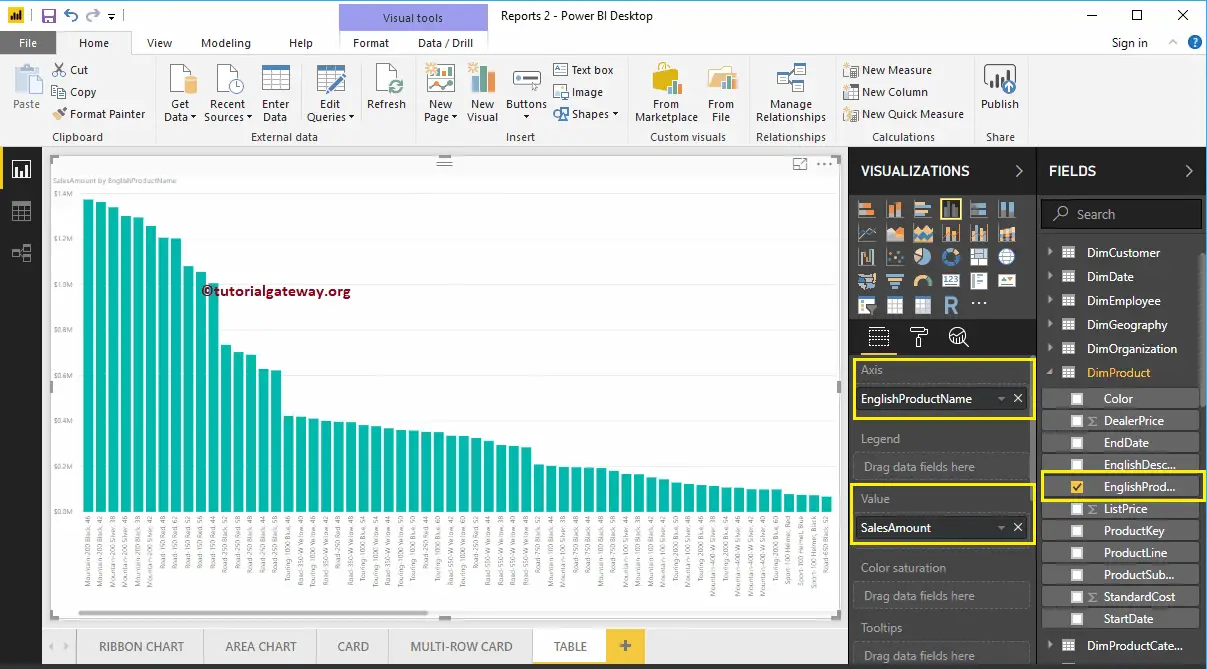
Click on the shown button under the Visualization section. It automatically converts the Power BI Column Chart into a Table. From the below screenshot, you can see the Tabular representation of Product names and their Sales Amount.
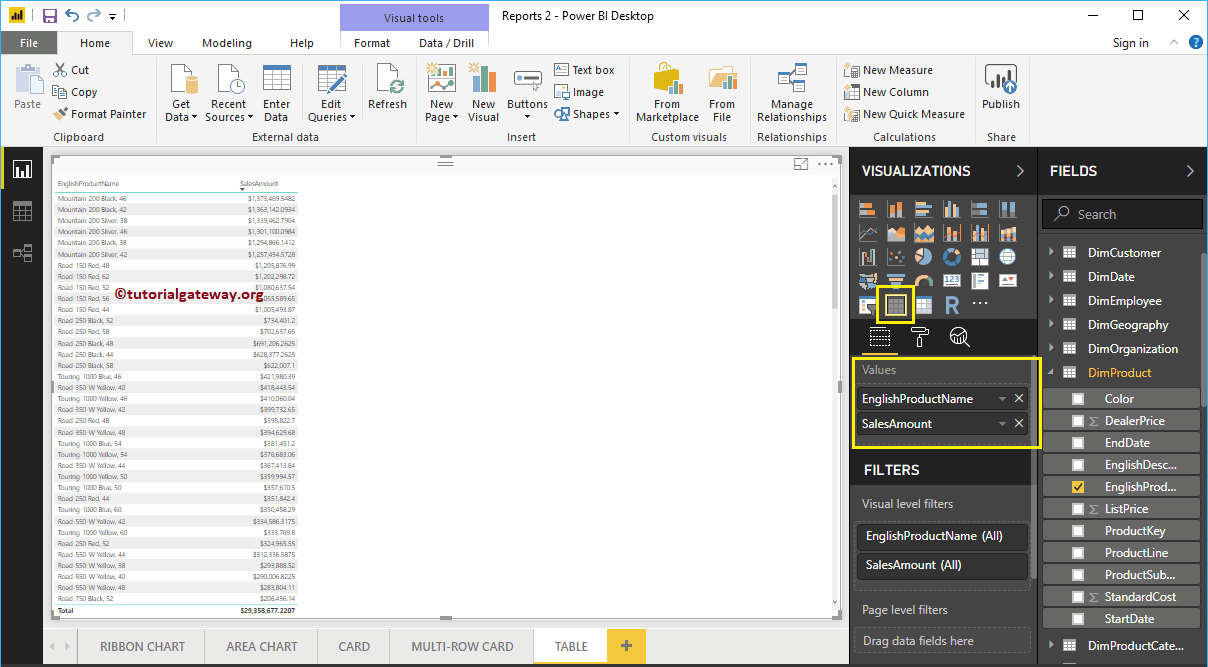
Create a Table Example
First, click on the shown icon present in the Visualization section. Power BI automatically creates a Table with dummy data, as shown in the below screenshot.
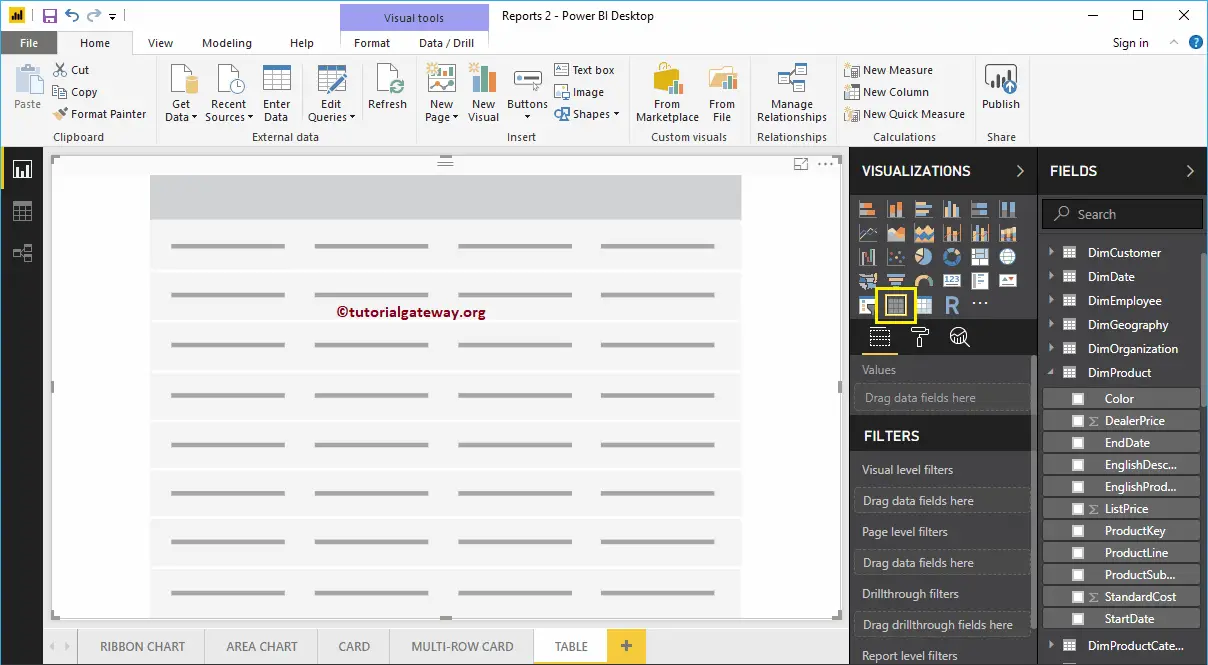
Next, drag the English product Subcategory Names and Sales Amounts to the Values section. Now, you can see the actual one with data.
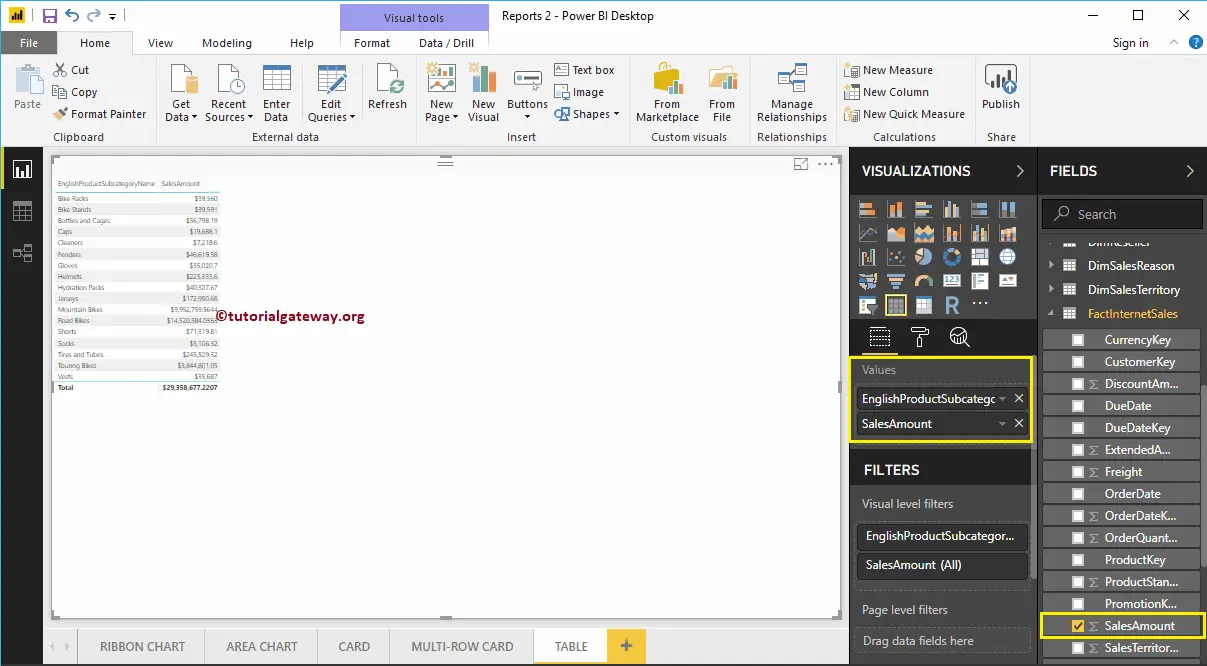
Let me add more metric values to tables, such as Total Product Cost, Order Quantity, and Tax amount.
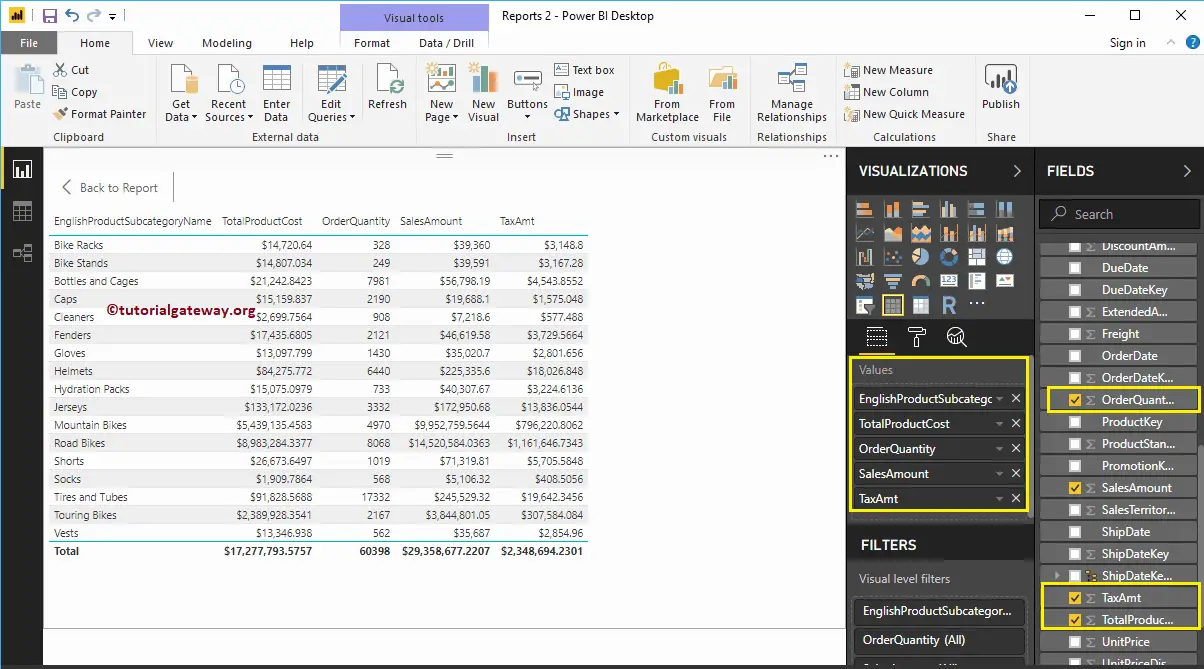
Let me do some quick formatting to this.
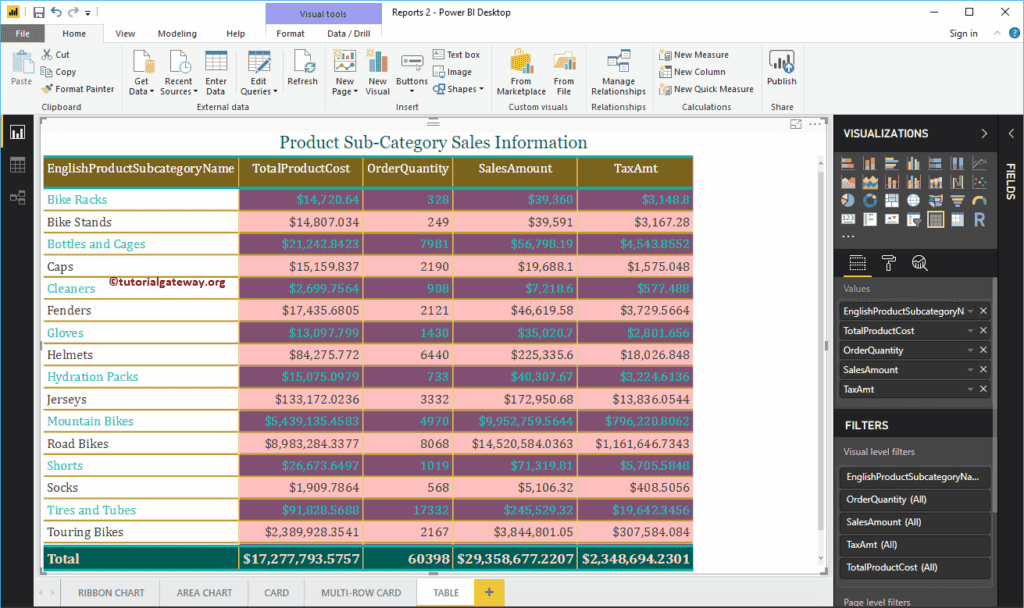
Format Power BI Table
How to Format Power BI Table Report with an example? The Power BI Format Table includes changing Grid Colors, Row Colors, Column and row formatting, Table Title text, background color, etc. We will use the Table we created earlier to demonstrate these Power BI table formatting options.
Please click on the Format button to see the list of table formatting options that are available.
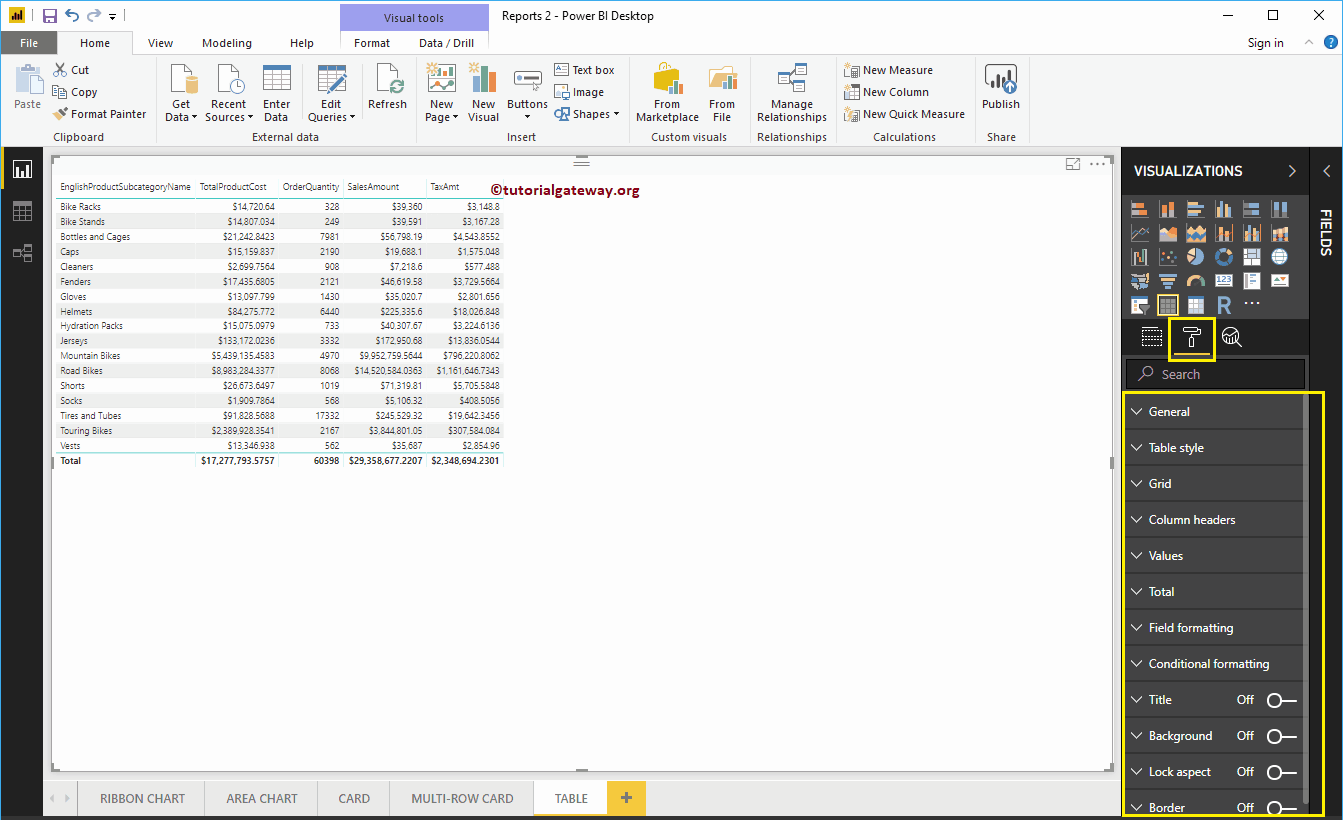
Format Power BI Table General Settings
Use this General Section to Change a table’s X, Y position, Width, and height.
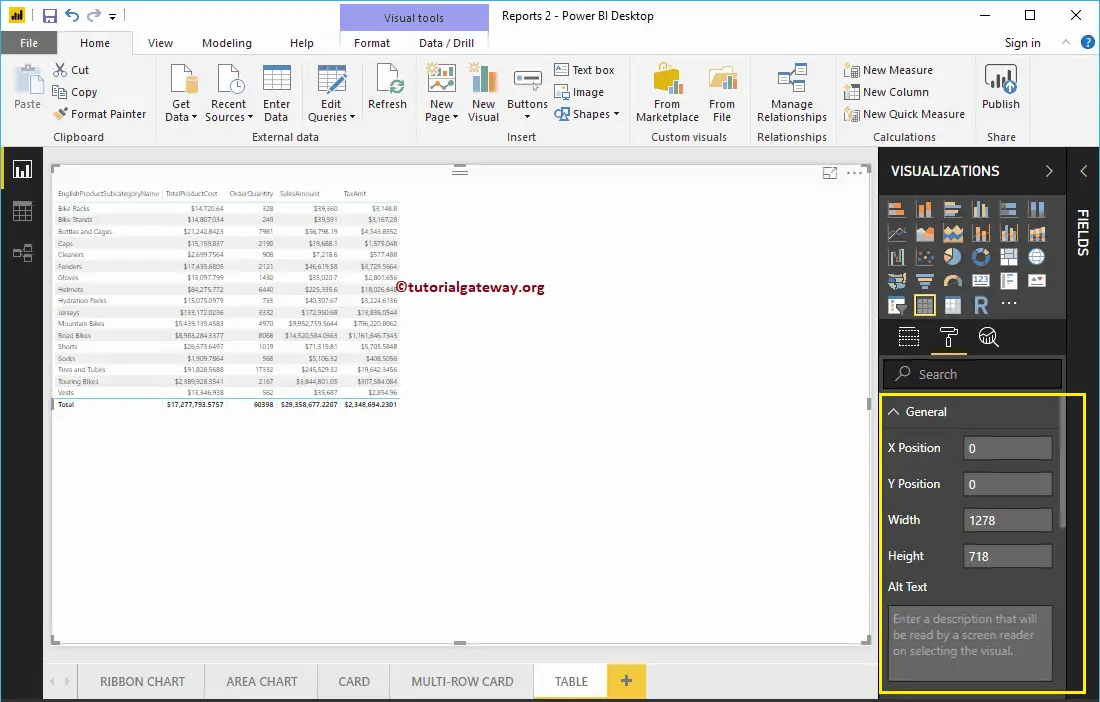
Format Table Style
From the screenshot below, you can see the list of styles available to style this table. Please select the style as per your requirements.
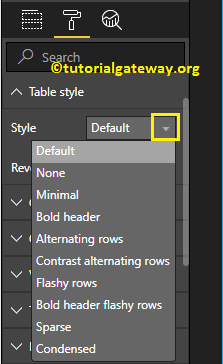
We are now selecting the Alternating Rows option from the drop-down list. Remember, this is the default option for any table, and it adds alternative row colors.
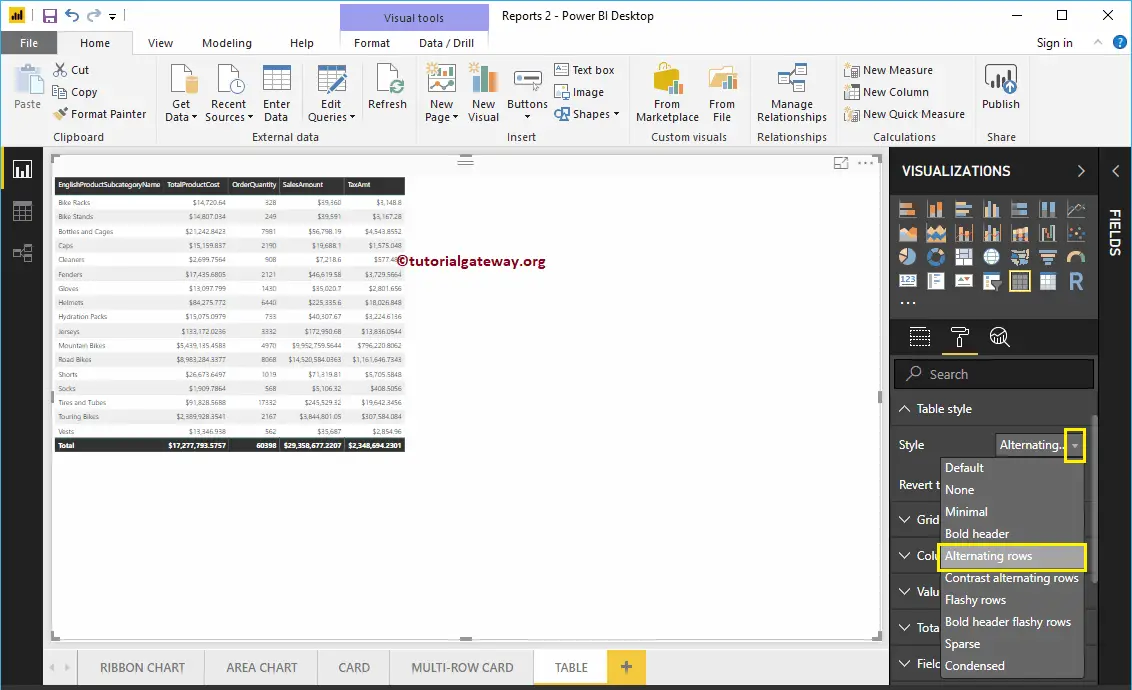
Format Grid of a Table in Power BI
The following is the list of options available for you to format the Grid.
- Vert Grid: Toggling this option from Off to On adds Vertical Grid—nothing but enabling Vertical lines to separate each column.
- Horiz Grid: It adds Horizontal Grid—nothing but enabling Horizontal lines to separate each row.
- Horiz Grid Color: Changing the Color of a Horizontal Grid.
- Horiz Grid thickness: Horizontal Grid Line width
- Row Padding: Space between the rows. Let me change it to 3 to increase the space.
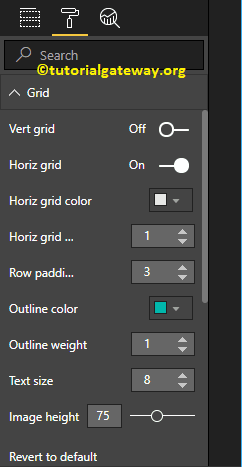
As you can see from the screenshot below, we enabled the Vertical Grid and assigned some random colors.
- Vert Grid Color: Change the Color of a Vertical Grid.
- Vert Grid thickness: Vertical Grid Line width or stroke
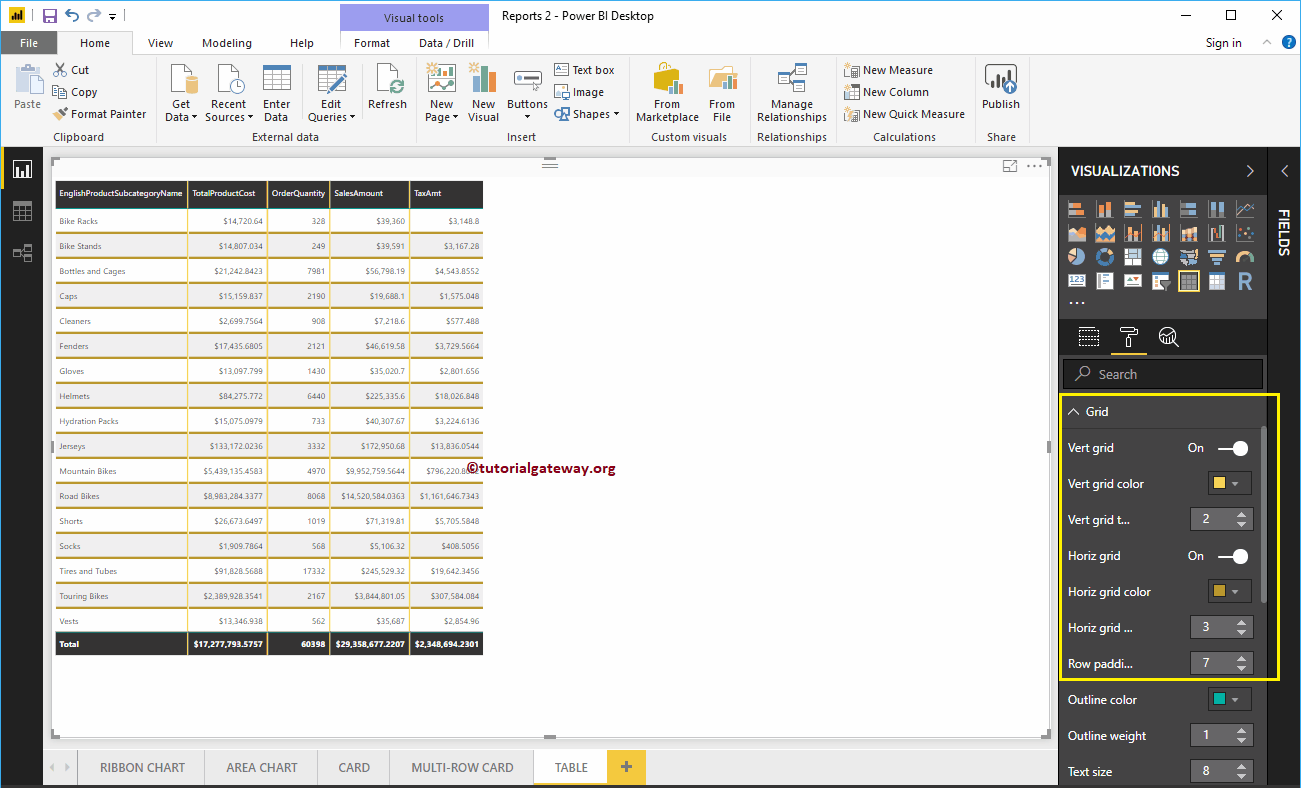
- Outline Color: Color Before the first row start and after the last row. We are using the default green as the Outline color.
- Outline Weight: Line width. We changed the line stroke to 4
- Text Size: Font size of table values. Let me change the text size to 14
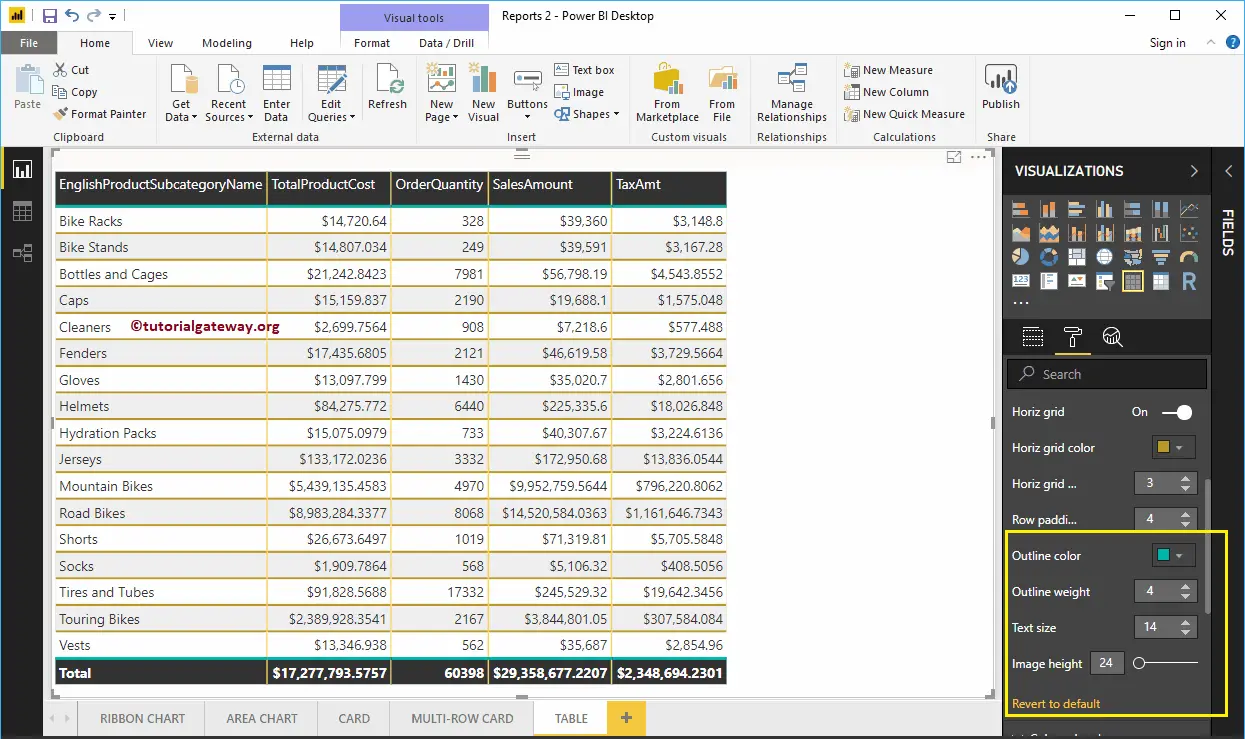
Format Column Headers of a Table in Power BI
This section is to alter the Header Colors. As you can see from the screenshot below, we changed the Font color to White and the background color to olive green. Next, Outline to Top + Bottom (Outline added to the top and bottom of a Header), Font Family to Cambria, Text Size to 26, and Header text alignment to center.
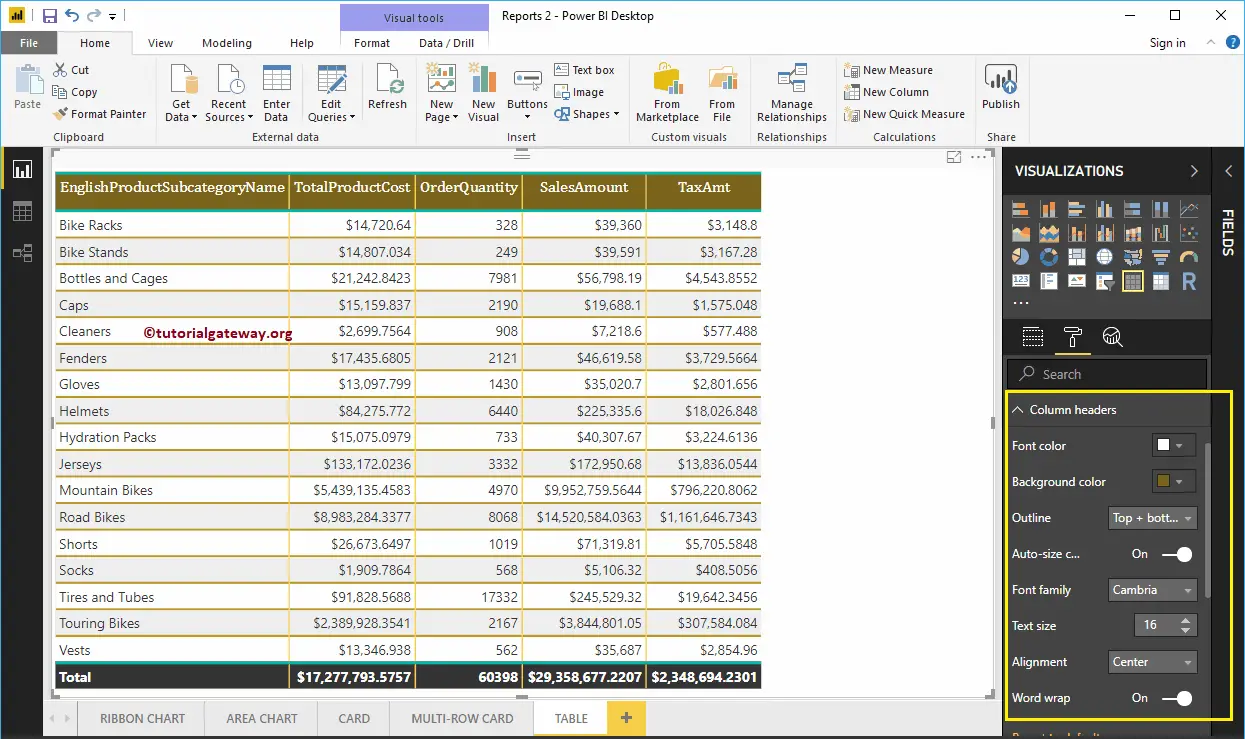
Format Values of a Table in Power BI
You can use this section to change the table values. As you can see from the screenshot below, we changed the Font colors and Back colors of the even and odd rows. Here, we also changed the Font-family to Cambria and the Text size to 16
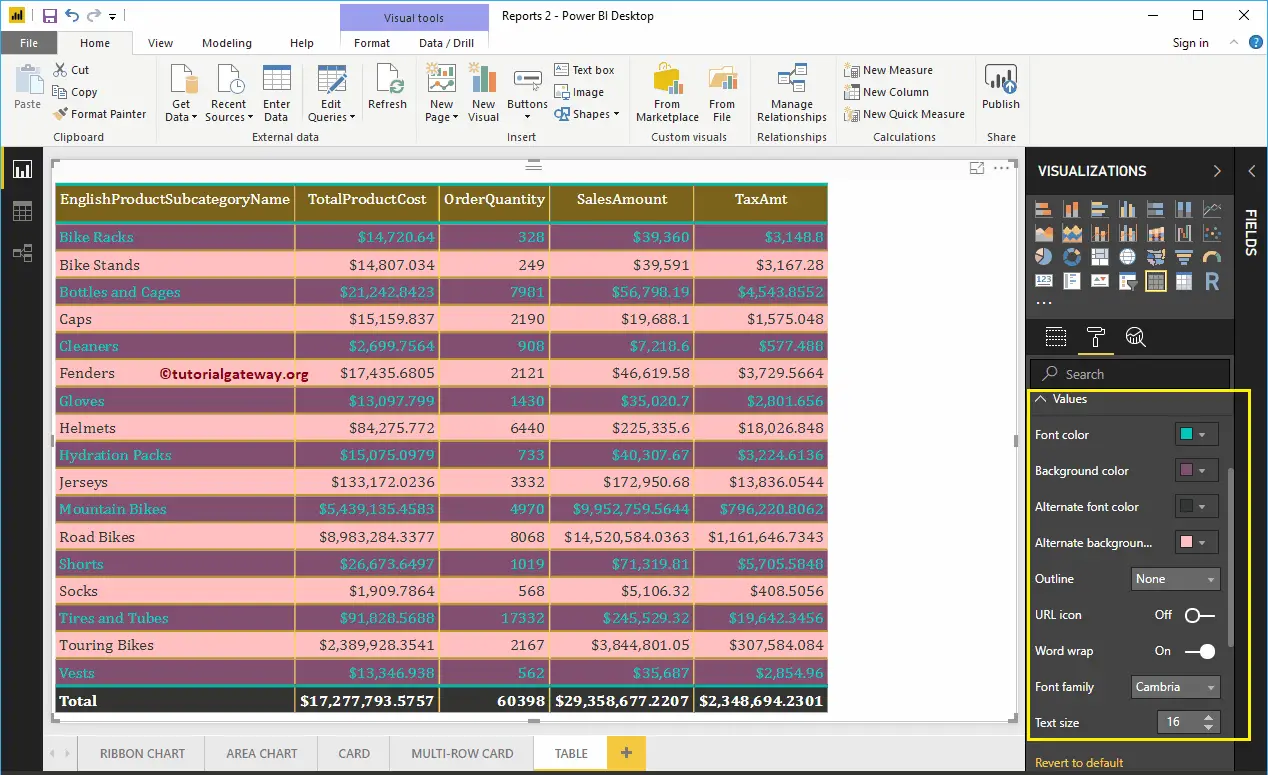
Format Total of a Table in Power BI
Use this Total section to alter the text and background color of Total. As you can see from the screenshot below, we changed the Totals Font color. Next, the Background color to green, the Outline to Top + Bottom (Outline added to the top and bottom of Total), the Font Family to Cambria, and the Text Size to 17.
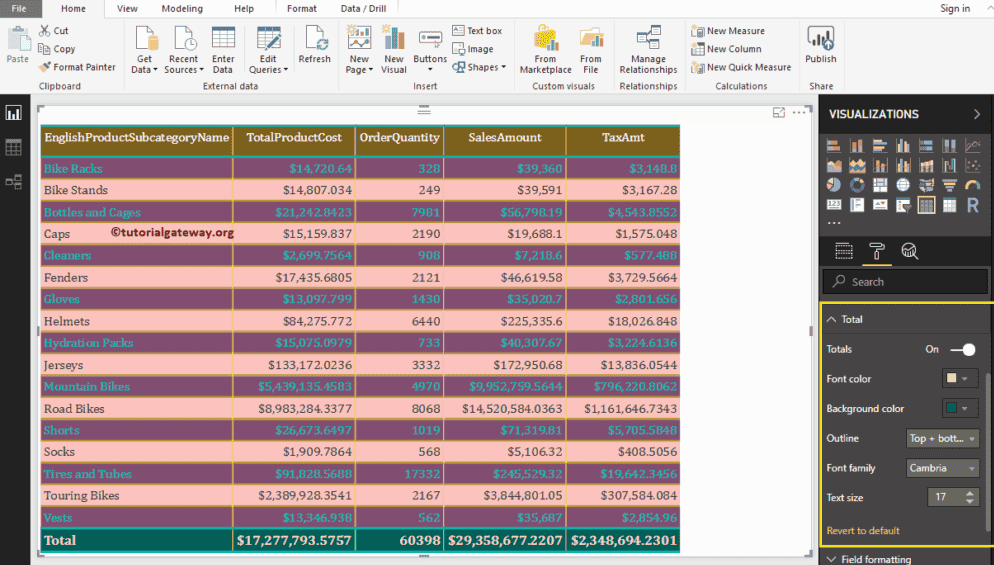
Table Field Formatting
Use this section to format individual columns in a table. For example, you can use this section to assign a completely different color to one column. Here, we are selecting the English Product Sub-Category Name.
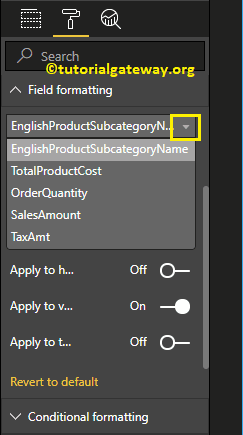
For the demo purpose, we only changed the background color to white for this column.
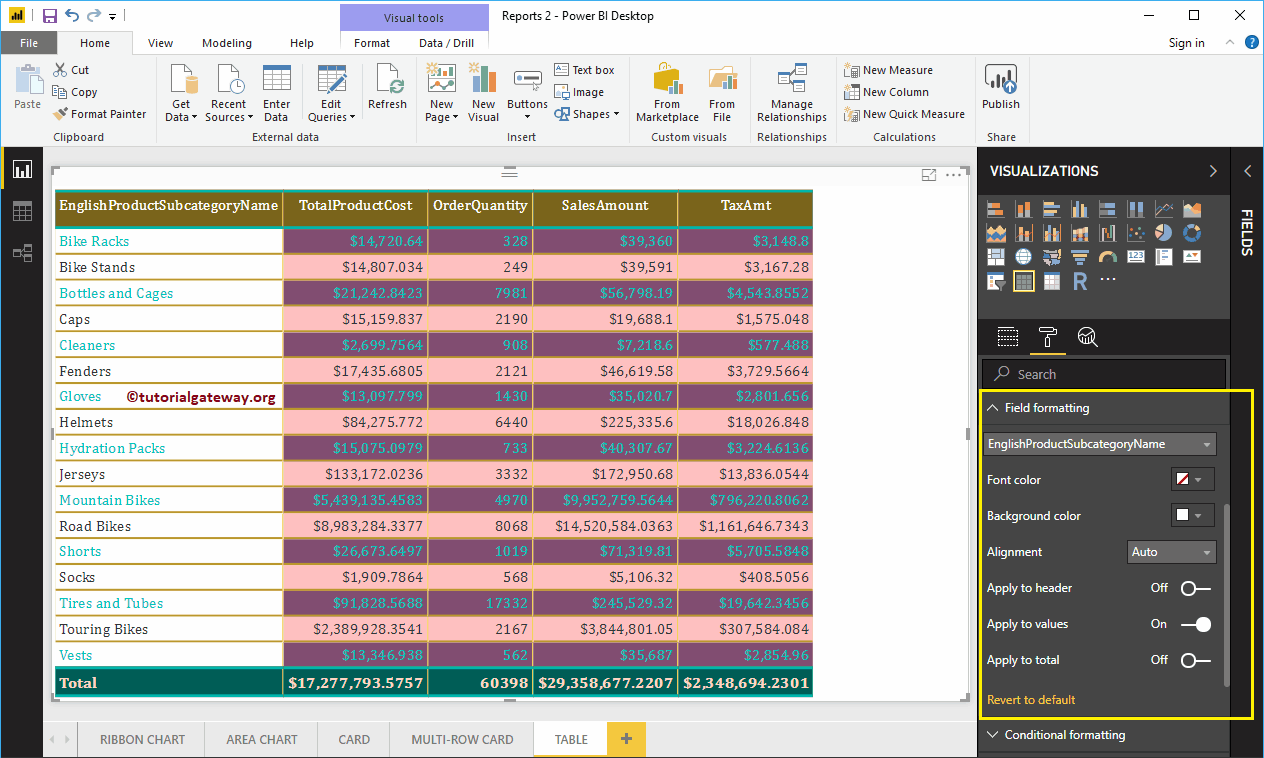
Power BI Table Conditional Formatting
Use this section to format Metric columns (Numeric) in a table. For now, we are selecting the Total Product Cost.
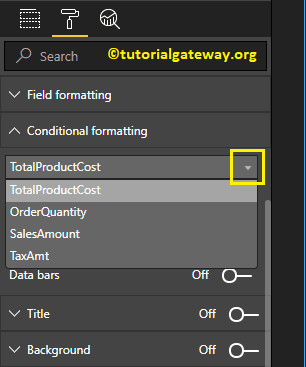
Selecting any numeric column opens the following window.
- Minimum: Color at Minimum Total Sales Amount
- Maximum: Color at Maximum Total Sales Amount
- Diverging: You can checkmark this option to assign diverging colors to this column.
We write a separate article to explain these settings
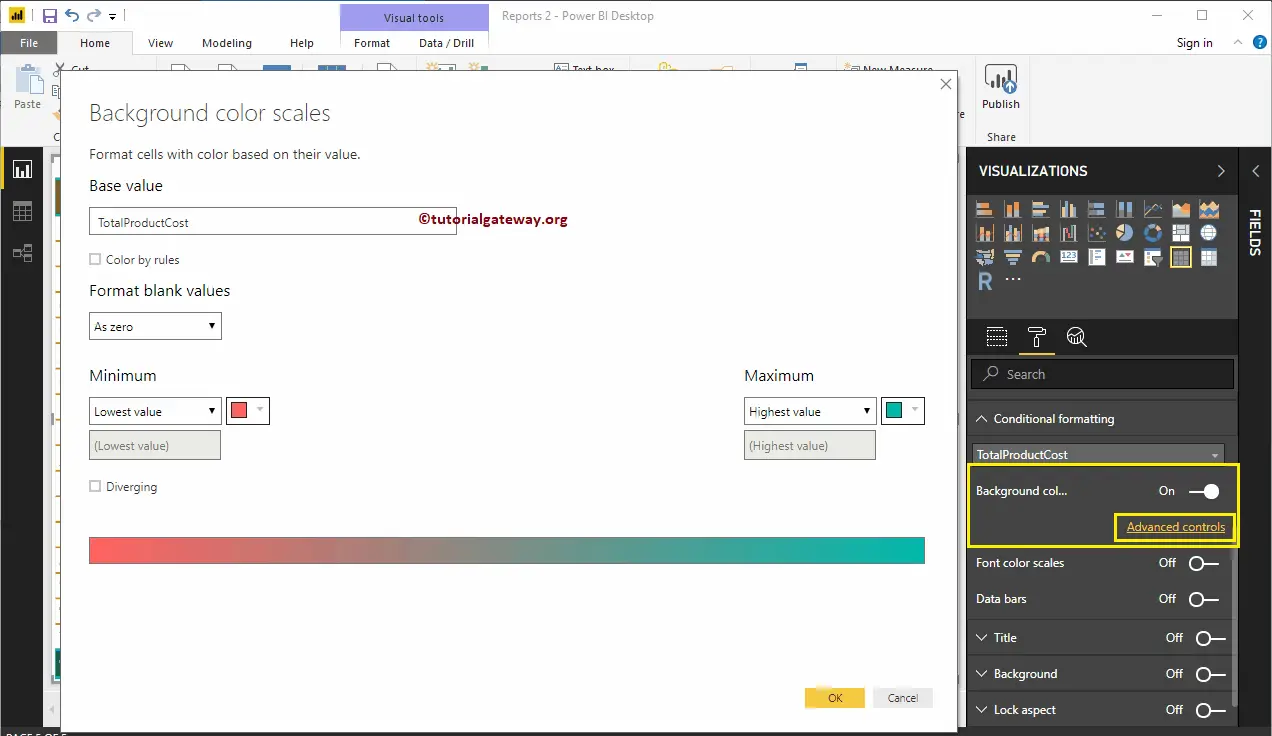
Format Power BI Table Title
You can enable the Table title by toggling the Title option from Off to On. The screenshot below shows that we added the Title Text as Product Sub-Category Sales Information.
Next, change the Font Color to Green, the Font Family to Georgia, the Text Size to 21, and the Title Alignment to the center. You can add the background Color to the Table title if you want.
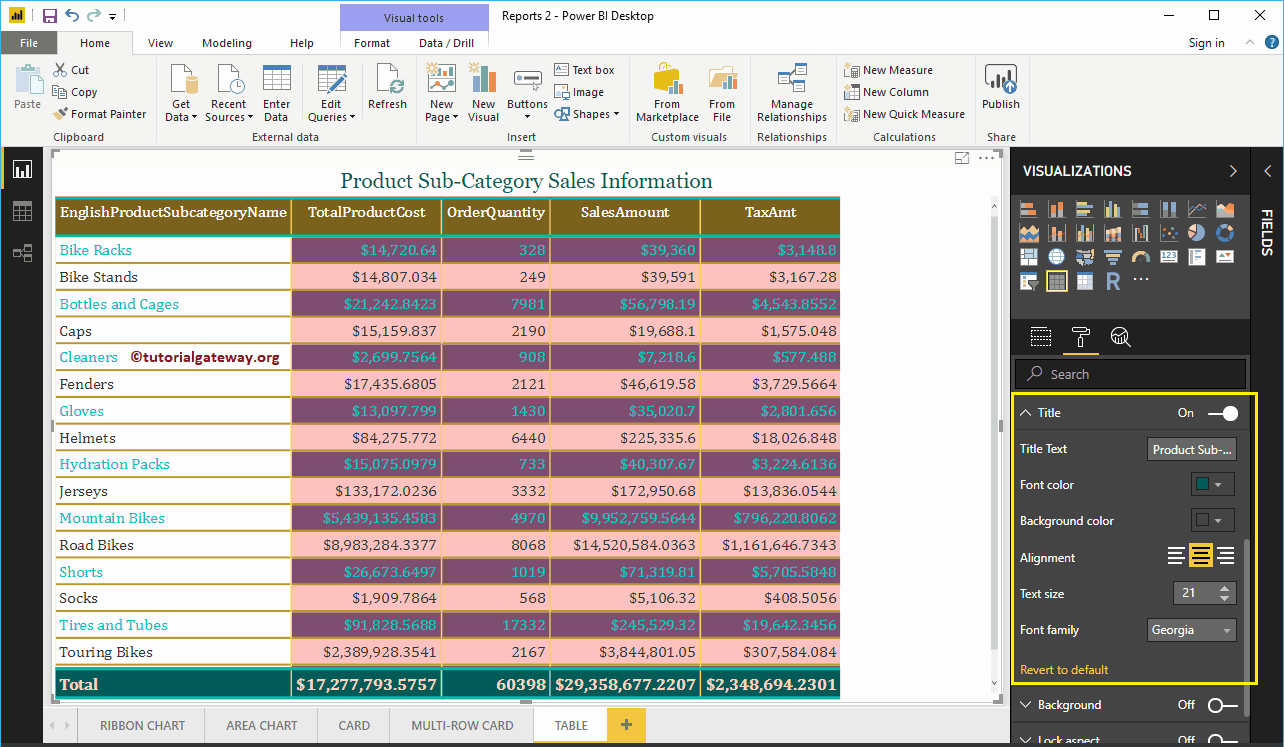
Change Power BI Table Background Color, and Borders
You can add Background color to a table by toggling the Background option to On. For demonstration purposes, we added sky blue with 49% transparency.
Similarly, you can add Borders to a table by toggling the Border option from Off to On.
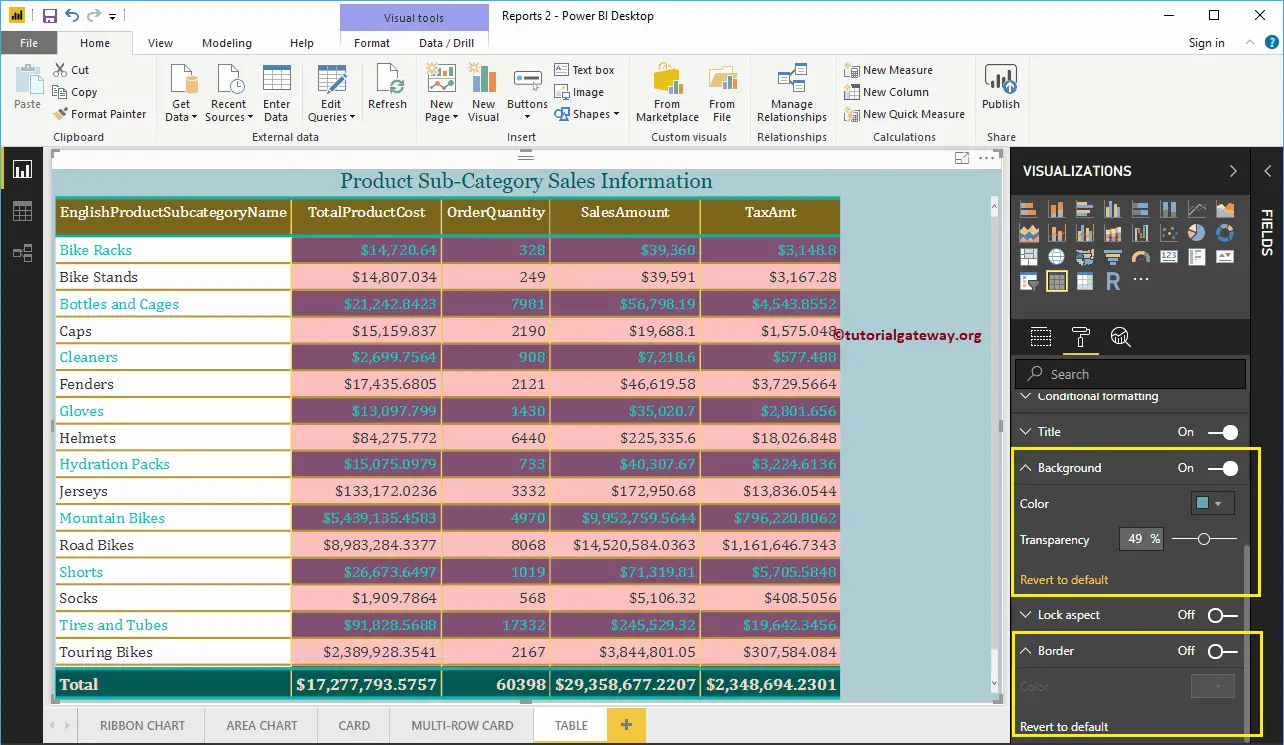
Table FAQ’s
Although the basic table looks similar to Excel or any other reporting tool, the formatting options give more power. For instance, add background colors to individual cells, background color, adding data bars, indicators, etc.
There are three types of tables.
1. Physical table – It contains the actual data.
2. Calculated Table or DAX expression table.
3. Virtual table or DAX measure code.

Comments are closed.